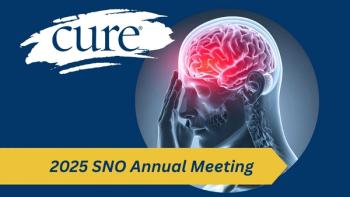
ABTA: Saving Lives Through Funding Research
The ultimate goal of the American Brain Tumor Association (ABTA) is to save lives through funding research.
ABTA, a Chicago-based national nonprofit formed in 1973, also wants to inform patients who get a brain tumor diagnosis — and the people who care for them — about treatment and options. The organization conducts seminars, provides publications, hosts webinars, offers educational programs and has professionals available to provide care consultations by phone or email. About half its funding comes from contributions, gifts and grants and about half from fundraising events, like golf outings and galas.
To learn more about ABTA and its goals, CURE spoke with Elizabeth Wilson, the organization’s president and chief executive.
What does your organization do?
The ABTA is the first and only national brain tumor volunteer organization for patient and caregiver support. We have 28 employees and a $5.5 million budget and we are in Chicago.
What have some of your successes been?
In the early 1970s, when the ABTA was founded, there were no patient-friendly materials to explain brain tumors, no coordination of research, and no way to track the prevalence of brain tumors. Things have changed.
In addition to creating a patient registry, including a registry for patients aged 15 to 39, we have worked with nurse organizations to create clinical guidelines for treating adults and pediatric patients. We have also fostered an alumni network where we bring researchers together for a weekend every year. These researchers meet each other, and that results in collaborations. Over the last three years we have seen at least 60 organizations collaborate. It’s been so successful that we have gotten a research grant to fund this type of collaborative research.
Is there anything interesting on the horizon in the field of brain tumor research?
Our alumni network has been so successful that we have gotten a research grant to fund this type of collaborative research between institutions.
What challenges do you face?
Our challenge is to do more, faster. There have been lots of advances in treatment, but the brain is complex, and because of the brain/blood barrier it is difficult to research.
Another challenge is that the population of people with brain tumors is relatively small, compared to other cancers.
What do brain tumor patients have in common?
Brain tumor patients experience fear and isolation. We try to mitigate the fear and empower patients with knowledge.
What kind of difficulties do you face regarding to patient education?
The challenge is getting in contact with patients at the point of diagnosis, while they still have many choices to make. We often hear patients say “I wish I had known this when I was diagnosed,” before they make decisions on treatment. We are building a grassroots volunteer network to reach patients closer to when they are diagnosed.
What drew you to this field? I like the mission and challenges, the ABTA’s history and legacy, and being at the center of the brain tumor ecosystem.
What have you achieved in funding research?
We’ve spent $30 million over the past 40 years, money awarded to 700 researchers. A lot were early career scientists. We have helped them stay in the field and go on to be scientists running their own research labs.
We are looking for research to eradicate brain tumors, but the research we fund does not necessarily lead directly to cures.
We do want discovery science, too, and our funding has led to two new drugs for glioblastoma multiforme (GBM) that are in development and the creation of a new biotech company; the $2 million we provided led to another $11 million in funding.
What does the big picture look like for brain tumor research and treatment?
Research has changed treatment dramatically. When I took this job it was just surgery, radiation and chemo.
But the big story that changed is the advent of precision medicine. There has been tremendous activity there-- more treatments that can control tumor growth. Brain tumors are becoming more like a chronic condition.





